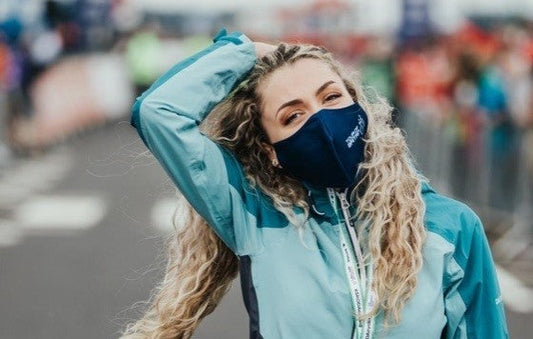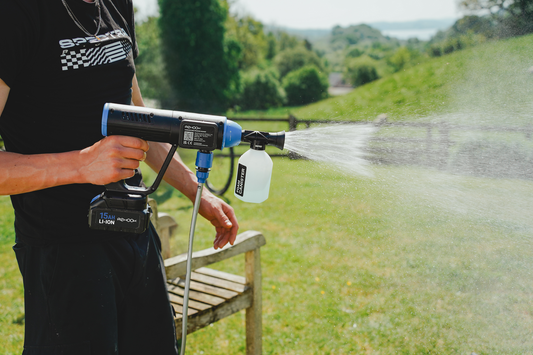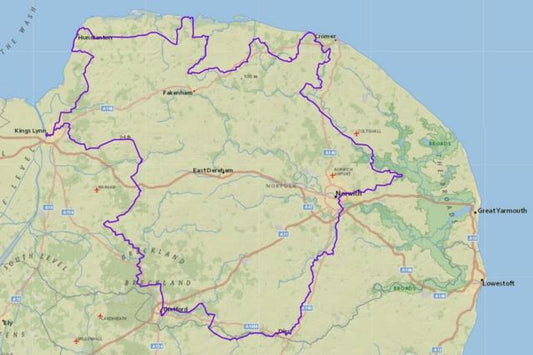An important step in performing essential maintenance and repairs is to know your bike inside and out. At Rehook, the correct terminology for these parts is really important to us. So much so, that all new starters learn this on day 1 of joining the business.
When I first started at Rehook, my knowledge of bikes was a little lacking, but through my time here I’ve picked up a lot of new knowledge from writing articles and meeting passionate cyclists, so this blog is my way of sharing that knowledge with all the cyclists that may feel a little unsure on their bike parts. I was in that position myself, and although it may seem intimidating it's really pretty easy to remember once you get used to it! We put together this helpful image as a guide, so whether you're experienced or new to cycling you should be able to follow along using the useful diagram above.

Frameset Parts
The frameset of your bike is the foundation. Some frames are lightweight, some are more durable. They can differ quite a bit depending on the bike and what it is intended for, and are typically made from carbon-fibre, aluminium alloys, steel, or even titanium. It’s good to know what kind of frame you have and how to describe each of the parts, so you can get replacements and repairs as they wear.
Fork: The part of the frameset that connects to your front wheel and stem, allowing you to steer. Not to be confused with the one you use at the dinner table!
Head Tube: The part of your frame that the stem and handlebars attach to, the head tube connects to the fork that moves the front tyre.
Top Tube: The near-horizontal tube of the frame that connects the head tube to the seat tube.
Down Tube: The tube of the frame that connects the head tube to the bottom bracket shell.
Bottom Bracket: The shell at the bottom of the frame that bearings are mounted in, allowing the cranks to rotate freely. Often abbreviated as BB.
Seatstays: The pair of tubes of the frame that run diagonally downward from the top of the seat tube to the rear dropouts to help stabilise your saddle.
Chainstays: The pair of tubes of the frame that run from the BB shell to the rear dropouts, alongside the chain.
Seat Tube: The tube of the frame that runs from the top tube down to the BB. The seat post is mounted inside the seat tube.
Seat Post: A fairly simple one, the seat post is the part of the bike that the saddle is mounted to. It can be adjusted to better fit your body geometry.
Axle: The axles are what hold the wheels in place. They could be quick-release "skewers" or, more commonly on modern bikes, thru axles.

Drivetrain Parts
The drivetrain is a very important part of any bike, as it is what allows it to move. Without the drivetrain, you could pedal all day and not go anywhere, which is why it’s good to know a thing or two about it.
Chain: Your chain is what connects your pedals to your drive-wheel, allowing the motion of pedalling to move you forward. If your chain slips free, you won’t be able to go anywhere until you hook it back on, which is exactly what our Rehook Chain Handling tools are designed for!
Pedal: Another easy one, the pedals are what allow your feet to rotate the cranks, and are essentially what power the bike through the pedalling motion.
Crank Arm: The centre of your bike, the crank arms are what your pedals are attached to in order to move your chain and create forward motion.
Chainring: An extremely important part of your bike. Attached to the crank arm on the drive-side, the chainring is what transfers the energy generated by pedalling and turning the crank to the chain.
Freewheel/Cassette: A pair of somewhat interchangeable terms among bike retailers, the term freewheel refers to a single set of gears that are screwed onto the bike’s rear wheel, which lock when you pedal the bike forward, forcing the drivetrain to drive the wheel. A cassette on the other hand is a set of sprockets found on your bike’s rear hub that are held together by something called a lockring. If you’re unsure which you have, it’s worth checking so you know what your bike excels at.
Freehub Body: The splined cylindrical part attached to the rear hub of most modern bikes. It’s what the cassette slides onto and locks in place.
Rear Derailleur: The device that keeps your chain tight and allows you to change gears by shifting the chain from one sprocket to another. Knowing how to adjust your rear derailleur is essential for changing gears while on the go. Don’t worry about the spelling, it’s just pronounced “Derailer”!
Front Derailleur: The other device that works similarly to the rear derailleur, but a bit more simplified. Bikes with only one chainring wont have one at all. But if you have two or more chainrings, which is becoming increasingly uncommon, then you'll need a front derailleur to shift the chain from chainring to chainring for different gears.

Wheel Parts
There’s a lot more to bike wheels than it may at first seem. The exact types wheel and tyre on your bike will depend on what terrain it is intended for cycling – road and off-road bikes having wildly different wheelsets. It’s good to have a working knowledge of them so you can change and adjust them on the go.
Rim: The rim of the tyre is the metal loop that the rubber tyre itself fits around. These can be made of various materials depending on the type of bike, with some being more lightweight and some being more durable for different types of cycling.
Hub: The hub is the center of the tyre, usually consisting of an axle, bearings and a hub shell. Hub designs can vary depending on the type of bike, but they are essential to the tyres as they basically connect and hold everything together, as the name suggests.
Spokes: Multiple "rods" that connect the rim to the hub of the wheel. They can come in slightly varying configurations depending on the brand or type of wheel and even different materials. They are responsible for maintaining "true" wheels that spin even and straight. So make sure you look after them.
Tyre: Another fairly self-explanatory one, your tyres are what fit around the wheel to give you a proper grip on the terrain. The specific type of tyre you’ll want for your bike depends on what you want to use it for, so be aware of the type of terrain you’ll be cycling on and make sure you choose appropriate tyres. Some can be extremely tight to fit, which is what our Tyre Glider is designed to help with.
Valve: There are two types of valve your bike will likely use – Presta and Schrader. The valve is for inflating your tyres, so it is a good idea to make sure your bike pump is compatible with the type of valve you have, or get a universal pump like Rehook AIR that works with both kinds.

Those are some of the most common parts you will find on most bikes. Of course there are plenty of different types of bikes out there that will vary to different degrees. More specialised bikes and electric bikes, for example, may be extremely different, while some bikes may only be slightly different depending on the make and model. For now though, I hope this guide has been helpful, and you can at least name a few extra bike parts!











